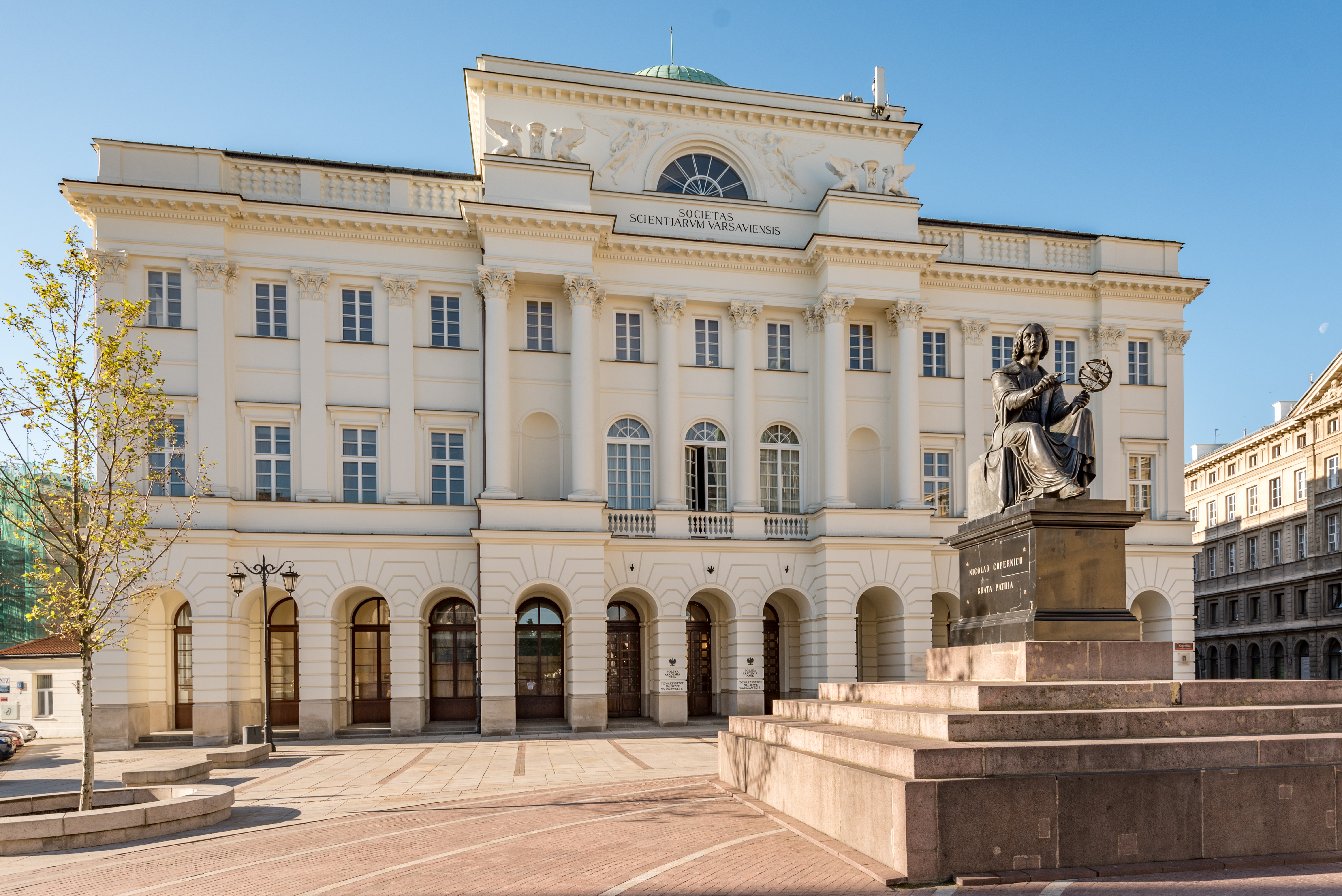|
Krzysztof Matyjaszewski
Krzysztof "Kris" Matyjaszewski (; born April 8, 1950) is a Polish-American chemist. He is the J.C. Warner Professor of the Natural Sciences at the Carnegie Mellon University Matyjaszewski is best known for the discovery of atom transfer radical polymerization (ATRP), a novel method of polymer synthesis that has revolutionized the way macromolecules are made. Matyjaszewski was elected a member of the National Academy of Engineering in 2006 and the National Academy of Sciences in 2019 for expanding the capabilities of controlled/living polymerizations and developing ATRP, a robust catalytic process for the radical polymerization of monomers. He received the prestigious Wolf Prize in Chemistry in 2011, the Dreyfus Prize in the Chemical Sciences in 2015, and the Grand Prix de la Fondation de la Maison de la Chimie, France in 2020. Education and career Matyjaszewski began studying chemistry at Lodz University of Technology in late 1960s and later graduated from the Petrochemical Un ... [...More Info...] [...Related Items...] OR: [Wikipedia] [Google] [Baidu] |
Konstantynów Łódzki
Konstantynów Łódzki is a town in Pabianice County, Łódź Voivodeship, Poland, with 18,335 inhabitants (2020). It borders Lodz to the east, Lutomiersk to the West, Aleksandrow Lodzki to the North, and Porszewice to the South. It was incorporated in 1924, but was founded in the 1820s by a landowner who had planned to build a textile industry there. In 1821 Konstantynów Łódzki, at that time still a village, became a part of the textile industry of the Łódź region. Shortly thereafter, in 1824 the town was given its current name and was established as a town in 1830. Notable residents * Krzysztof Matyjaszewski (born 1950), Polish-American chemist, Wolf Prize The Wolf Prize is an international award granted in Israel, that has been presented most years since 1978 to living scientists and artists for ''"achievements in the interest of mankind and friendly relations among people ... irrespective of natio ... winner References External links * Konstantynów Łódzki c ... [...More Info...] [...Related Items...] OR: [Wikipedia] [Google] [Baidu] |
Polish Academy Of Sciences
The Polish Academy of Sciences ( pl, Polska Akademia Nauk, PAN) is a Polish state-sponsored institution of higher learning. Headquartered in Warsaw, it is responsible for spearheading the development of science across the country by a society of distinguished scholars and a network of research institutes. It was established in 1951, during the early period of the Polish People's Republic following World War II. History The Polish Academy of Sciences is a Polish state-sponsored institution of higher learning, headquartered in Warsaw, that was established by the merger of earlier science societies, including the Polish Academy of Learning (''Polska Akademia Umiejętności'', abbreviated ''PAU''), with its seat in Kraków, and the Warsaw Society of Friends of Learning (Science), which had been founded in the late 18th century. The Polish Academy of Sciences functions as a learned society acting through an elected assembly of leading scholars and research institutions. The Academy h ... [...More Info...] [...Related Items...] OR: [Wikipedia] [Google] [Baidu] |
Göttingen Academy Of Sciences And Humanities
The Göttingen Academy of Sciences (german: Akademie der Wissenschaften zu Göttingen)Note that the German ''Wissenschaft'' has a wider meaning than the English "Science", and includes Social sciences and Humanities. is the second oldest of the seven academies of sciences in Germany. It has the task of promoting research under its own auspices and in collaboration with academics in and outside Germany. It has its seat in the university town of Göttingen. History The '' Königliche Gesellschaft der Wissenschaften'' ("Royal Society of Sciences") was founded in 1751 by King George II of Great Britain, who was also Prince-Elector of the Holy Roman Empire and Duke of Brunswick-Lüneburg (Hanover), the German state in which Göttingen was located. The first president was the Swiss natural historian and poet Albrecht von Haller. It was renamed the "Akademie der Wissenschaften zu Göttingen" in 1939. Among the learned societies in the Federal Republic of Germany, the Göttingen academ ... [...More Info...] [...Related Items...] OR: [Wikipedia] [Google] [Baidu] |
Dannie Heineman Prize (Göttingen)
The Dannie Heineman Prize of the Göttingen Academy of Sciences and Humanities has been awarded biennially since 1961 for excellent recently published publications in a new research field of current interest. It is awarded to younger researchers in natural sciences or mathematics. The prize is named after Dannie Heineman, a Belgian-US philanthropist, engineer and businessman with German roots. Prizewinners * 1961 James Franck, biochemistry * 1963 Edmund Hlawka, mathematics * 1965 Georg Wittig, chemistry * 1967 Martin Schwarzschild, astrophysics * 1967 Gobind Khorana, biochemistry * 1969 Brian Pippard, physics * 1971 Neil Bartlett, chemistry * 1973 Igor Schafarewitsch, mathematics * 1975 Philip Warren Anderson, physics * 1977 Albert Eschenmoser, chemistry * 1979 Phillip Griffiths, mathematics * 1981 Jacques Friedel, physics * 1983 Gerd Faltings, mathematics * 1986 Rudolf Thauer jr, biology * 1987 Alex Müller and Georg Bednorz, physics * 1989 Dieter Oesterhelt, biochemistry * ... [...More Info...] [...Related Items...] OR: [Wikipedia] [Google] [Baidu] |
Reuters
Reuters ( ) is a news agency owned by Thomson Reuters Corporation. It employs around 2,500 journalists and 600 photojournalists in about 200 locations worldwide. Reuters is one of the largest news agencies in the world. The agency was established in London in 1851 by the German-born Paul Reuter. It was acquired by the Thomson Corporation of Canada in 2008 and now makes up the media division of Thomson Reuters. History 19th century Paul Reuter worked at a book-publishing firm in Berlin and was involved in distributing radical pamphlets at the beginning of the Revolutions in 1848. These publications brought much attention to Reuter, who in 1850 developed a prototype news service in Aachen using homing pigeons and electric telegraphy from 1851 on, in order to transmit messages between Brussels and Aachen, in what today is Aachen's Reuters House. Reuter moved to London in 1851 and established a news wire agency at the London Royal Exchange. Headquartered in London, R ... [...More Info...] [...Related Items...] OR: [Wikipedia] [Google] [Baidu] |


